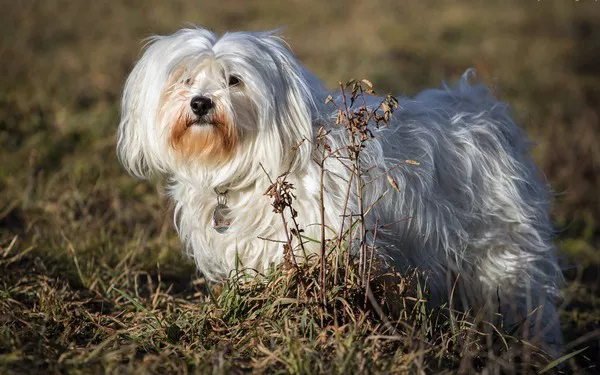The American Curl, with its distinctively backward-curling ears and friendly personality, has captured the hearts of cat lovers around the world. As a breed, it stands out not only for its unique appearance but also for its adaptable nature and loving temperament. This article explores how much a 4-month-old American Curl kitten should weigh, while also providing an in-depth look at the breed’s characteristics, living habits, and developmental stages. By the end of this read, you’ll have a better understanding of how to ensure your kitten‘s healthy growth and development.
Introduction to the American Curl Breed
Before diving into weight specifics, it’s essential to familiarize ourselves with the American Curl breed. The American Curl originated in California in 1981 when a stray cat with unusual, curled-back ears was adopted by Joe and Grace Ruga. This discovery led to the creation of a new and distinctive breed. Over time, the American Curl gained popularity not only for its ears but also for its sweet, affectionate personality.
Physical Characteristics
The most recognizable feature of the American Curl is, of course, the breed’s ears. While most kittens are born with straight ears, the American Curl’s ears start to curl back at around 3 to 5 days of age. This curling gives the cat a whimsical, alert look and is one of the main attractions for cat enthusiasts. Despite their unique appearance, these ears are fully functional, and the cartilage remains firm but flexible.
The American Curl has a medium-sized body, with muscular yet graceful proportions. Both males and females tend to be well-balanced, with long, elegant tails and soft, silky coats that come in various lengths and colors. Whether short-haired or long-haired, the texture of the fur is typically smooth and easy to maintain.
Personality and Temperament
American Curls are known for their friendly and outgoing personalities. Unlike some breeds that tend to be aloof, these cats are usually curious and love interacting with their human companions. They’re often described as “people-oriented” and enjoy being part of family activities. Their playful nature makes them a great choice for families with children, and they generally get along well with other pets.
Moreover, American Curls are known to maintain kitten-like behavior well into adulthood, often playing and engaging with their surroundings even as they age. This playful demeanor makes them enjoyable companions, while their gentle nature ensures they’re not too demanding.
Growth Stages of an American Curl
Like all cats, American Curl kittens go through several distinct growth stages. Understanding these stages can help cat owners gauge how well their kitten is developing and whether they’re hitting the appropriate milestones.
Newborn to Weaning (0-8 Weeks)
During the first two months of life, kittens are dependent on their mother’s milk for nutrition. Their bodies are in a rapid growth phase, and this period is critical for building a strong immune system and developing motor skills. At birth, kittens typically weigh between 85 to 115 grams, and by the time they’re weaned (around 8 weeks), they’ll have gained a significant amount of weight, typically reaching around 800 to 1,000 grams.
Post-Weaning (8-16 Weeks)
Once kittens are weaned, they begin transitioning to solid food, which provides the necessary nutrients for continued growth. At this stage, their energy levels increase dramatically as they begin exploring their environment and developing social behaviors. By the time they reach 4 months of age (approximately 16 weeks), their bodies will have undergone significant changes, and they will begin to resemble miniature versions of their adult selves.
Adolescent Growth (4-12 Months)
After 4 months, the growth rate of an American Curl starts to slow down compared to the rapid development seen in earlier weeks. However, kittens still gain weight steadily as they continue to mature. While the final adult weight depends on various factors (including genetics and diet), a healthy American Curl kitten at 4 months typically weighs between 4 and 5.5 pounds (1.8 to 2.5 kilograms). From this point on, their growth continues, though at a reduced pace, until they reach their adult size, which is generally around 7 to 12 pounds.
Factors That Influence Weight in a 4-Month-Old American Curl
The weight of a 4-month-old American Curl can be influenced by several factors. It’s important for cat owners to be aware of these variables to ensure their kitten is growing at a healthy rate.
Genetics
Genetics plays a significant role in determining the size and weight of an American Curl. If a kitten comes from a line of larger cats, it’s likely that the kitten will grow to be bigger than average. On the other hand, kittens from smaller lines may be on the lower end of the weight spectrum. Though breed standards generally outline the expected size range for a healthy adult, individual variations can occur.
Nutrition
Proper nutrition is essential for the growth and development of any kitten. A 4-month-old American Curl should be eating a balanced diet that is rich in proteins, fats, and essential vitamins. High-quality commercial kitten food is formulated to meet these needs, providing all the nutrients required for healthy bone, muscle, and brain development.
At this age, kittens should be fed around three to four times a day, with portion sizes adjusted based on their growth. It’s important to monitor their weight regularly and ensure they’re not underfed or overfed, as both can lead to health problems.
Physical Activity and Play
Like most cats, American Curls are naturally playful, and physical activity plays a key role in their development. At 4 months, kittens are particularly active and spend much of their time exploring, climbing, and playing. This activity level helps build muscle and coordination, contributing to their overall health and well-being. A sedentary lifestyle or lack of stimulation, on the other hand, can lead to weight gain or developmental delays.
Providing your kitten with ample toys, climbing structures, and interactive playtime ensures they get enough exercise, which helps maintain a healthy weight. Physical activity also strengthens their social bonds and reduces anxiety.
Health Issues
Occasionally, underlying health issues can affect a kitten’s growth and weight. Conditions like intestinal parasites, infections, or congenital defects can hinder normal development. If your American Curl kitten is significantly under or overweight at 4 months, or if they exhibit other signs of illness (such as lethargy, vomiting, or diarrhea), it’s important to consult a veterinarian for a thorough examination.
Diet Recommendations for a 4-Month-Old American Curl
Proper nutrition is crucial to ensuring that your 4-month-old American Curl is developing healthily. A balanced diet tailored to the needs of growing kittens supports their bone, muscle, and cognitive development. Here’s what to consider when choosing a diet for your American Curl kitten.
Kitten-Specific Food
At 4 months old, your kitten should be eating food that is specifically formulated for kittens. Kitten food is higher in calories, protein, and essential fatty acids than adult cat food. It provides the energy and nutrients that young cats need to support their rapid growth. Look for brands that list meat as the primary ingredient and avoid products with excessive fillers like corn or soy.
Wet vs. Dry Food
Both wet and dry food have benefits for growing kittens. Wet food, with its higher moisture content, is excellent for hydration and helps prevent urinary tract issues. Additionally, many kittens find wet food more palatable due to its strong scent and soft texture.
Dry food, on the other hand, is beneficial for dental health, as it helps reduce plaque buildup on a kitten’s teeth. Many cat owners opt to feed a combination of both wet and dry food, ensuring their kitten gets the benefits of both.
Portion Control and Feeding Schedule
At 4 months, an American Curl kitten should be fed three to four small meals throughout the day. Splitting up their meals helps keep their energy levels stable and prevents overeating. Pay close attention to the portion sizes recommended by your kitten food’s packaging, as overfeeding can lead to excessive weight gain, while underfeeding can hinder their growth.
A 4-month-old kitten should typically consume between 200 to 300 calories per day, but this can vary based on their activity level and metabolism. Regularly monitoring your kitten’s weight and adjusting their food intake accordingly ensures they’re growing at a healthy rate.
Supplements
In most cases, a high-quality kitten food will provide all the nutrients your kitten needs without the need for additional supplements. However, if your veterinarian identifies a nutritional deficiency or specific health concern, they may recommend supplements like Omega-3 fatty acids for skin and coat health or calcium for bone development.
Signs of Healthy Development
As you track your American Curl kitten’s growth, there are a few key indicators that they are developing healthily:
Steady Weight Gain
A 4-month-old kitten should continue to gain weight steadily, though the growth rate will slow down compared to earlier stages. You can monitor their progress by weighing them every few weeks and recording the results. Healthy weight gain varies, but generally, a 4-month-old American Curl should weigh between 4 and 5.5 pounds, with males tending to be on the heavier side.
See Also: What is the Rarest American Curl?
Playful and Active Behavior
Kittens are naturally energetic, and a 4-month-old American Curl should be active and engaged in their environment. They should be curious, explore their surroundings, and play with toys. A lack of energy or disinterest in play could be a sign of a health issue and should be discussed with a veterinarian.
Shiny Coat and Clean Ears
A healthy kitten will have a shiny, smooth coat that is free from mats or bald spots. Their ears, though curled, should be clean and free from discharge. Regular grooming and cleaning help maintain the health of their fur and ears.
Appropriate Muscle Development
By 4 months, kittens should have well-developed muscles, especially in their legs and core. Physical activity and play are essential for muscle development, so ensuring your kitten has plenty of opportunities to climb and run is important.
Common Health Concerns for American Curl Kittens
While American Curls are generally a healthy breed, like all cats, they can be susceptible to certain health conditions. Knowing what to look for can help you address issues early and ensure your kitten lives a long, healthy life.
Ear Infections
Due to their unique ear structure, American Curls are somewhat prone to ear infections. The curled-back ears can make it easier for debris to get trapped inside the ear canal, leading to infection if not cleaned regularly. It’s important to inspect your kitten’s ears weekly and clean them as needed to prevent wax buildup or irritation.
Joint and Bone Development
Rapid growth during kittenhood can sometimes put strain on the joints, especially in larger breeds. While American Curls are not particularly prone to joint issues, it’s important to provide your kitten with a balanced diet rich in calcium and phosphorus to support healthy bone growth.
Parasites
Like all kittens, American Curls are at risk of contracting intestinal parasites like worms. Routine deworming treatments and regular veterinary check-ups can prevent these issues from affecting your kitten’s growth.
Conclusion
A 4-month-old American Curl kitten should weigh between 4 and 5.5 pounds, though individual variations in size and genetics can influence their exact weight. The most important factors contributing to a healthy weight are proper nutrition, physical activity, and regular veterinary care. By providing your kitten with a balanced diet, plenty of opportunities for play, and regular monitoring, you can ensure they grow into a happy, healthy adult cat.
Ultimately, the key to raising a healthy American Curl is a combination of love, attention, and informed care. Regularly check in with your veterinarian to ensure your kitten is on track, and be sure to adjust their diet and activity as they grow. With the right support, your American Curl will thrive and remain a joyful companion for many years to come.
Related Topics:
























